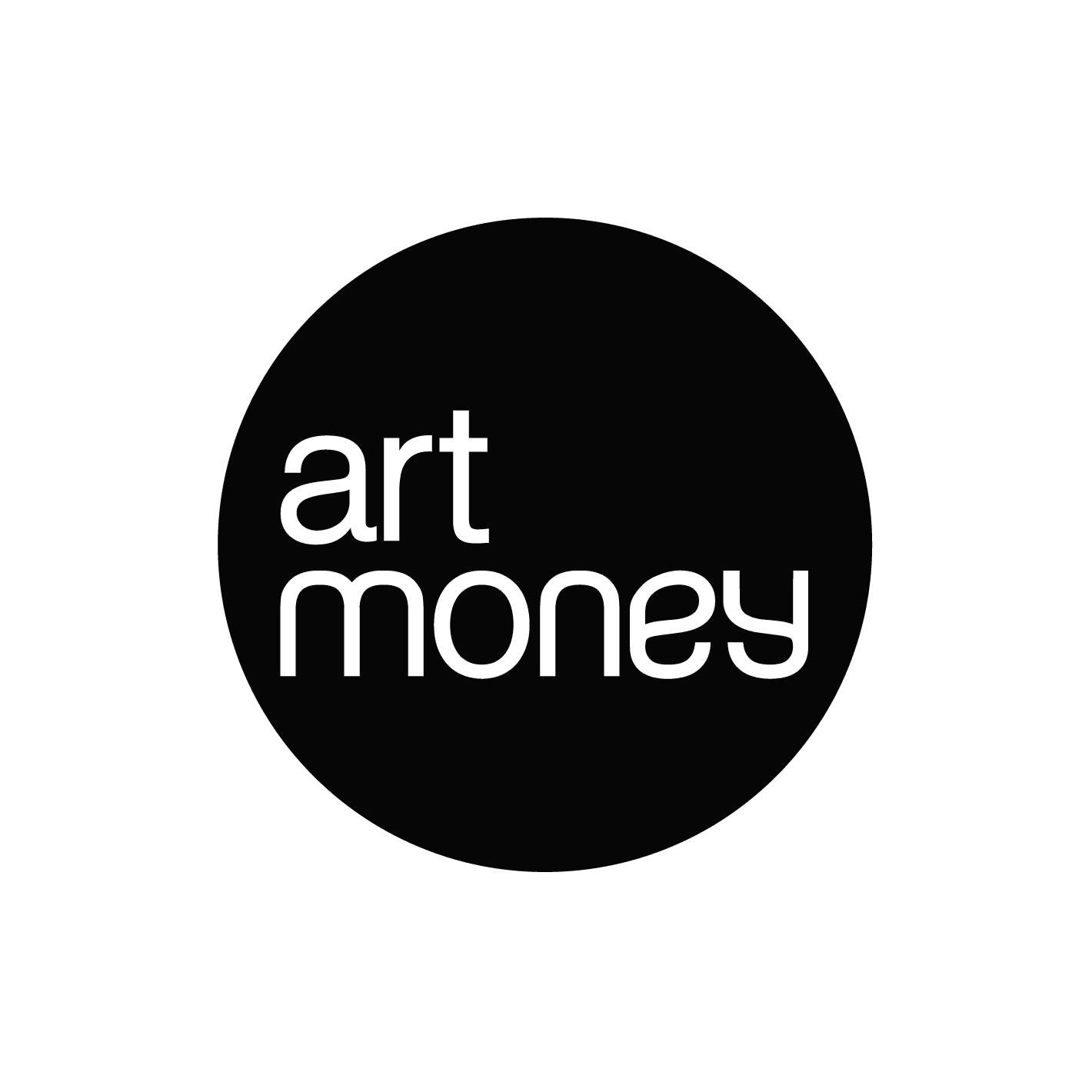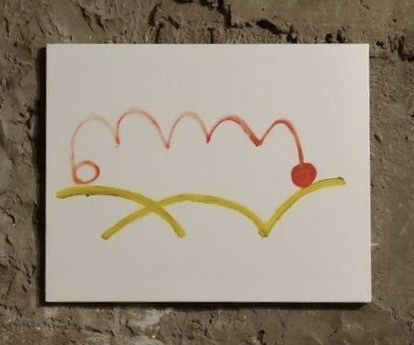 1.
1.
This painting is a condensation of Phil King’s work: squiggles and nothing but.
All painters are cartographers. A line - even as a drip of paint - demarcates space, creates boundaries, some version of here and there. But as these worlds don't exist outside the canvas, our criteria of assessment isn't accuracy. Artists don't represent the world; they create worlds-the map becomes the territory and vice versa. When we see art, the question then becomes: What world is this? How do things operate here? How am I, as this viewer, situated in its world? And how, in turn, does this world infect the other worlds in which I live? As Michel Foucault argues, a particular artist's body of work - what we call an oeuvre, one of the more fantastically ugly words - is a fundamentally arbitrary demarcation ("What matter who's speaking?" says Foucault channeling Beckett). Why group all these paintings together just because one person presumably painted them? After all, as a viewer, I am free to group together whatever art works I so desire in order to create all kinds of wondrous worlds. A Cézanne with a Matthew Ritchie with a Francis Bacon with an Alice Neel: now that is a complex body of work! But there remains something seductive - luxurious, even - about letting the artist do that work, letting their body forge the laws of the land. Every oeuvre proffers a world, or worlds, rife with rules and moods, gestures and laws, ways of going. Which is to say, rather than me building my world with the work of various artists, I can choose one artist and dwell in their world (and, yes, I use plural pronouns when it's not confusing). Let the artist be the world maker! And make me, the viewer, less world maker than explorer and, hopefully, amplifier and multiplier. For the great British contemporary painter, Phil King, worlds emerge primarily with, and as, squiggles. Indeed, this movement between with and as is the very stuff of his work. While he can use the squiggle as a form of outline, his squiggle exceeds - or, rather, supersedes - what an outline is. King's squiggles are not just the laying of borders but at once forge the very space, affect, and relations within his work.
Look at this scene.
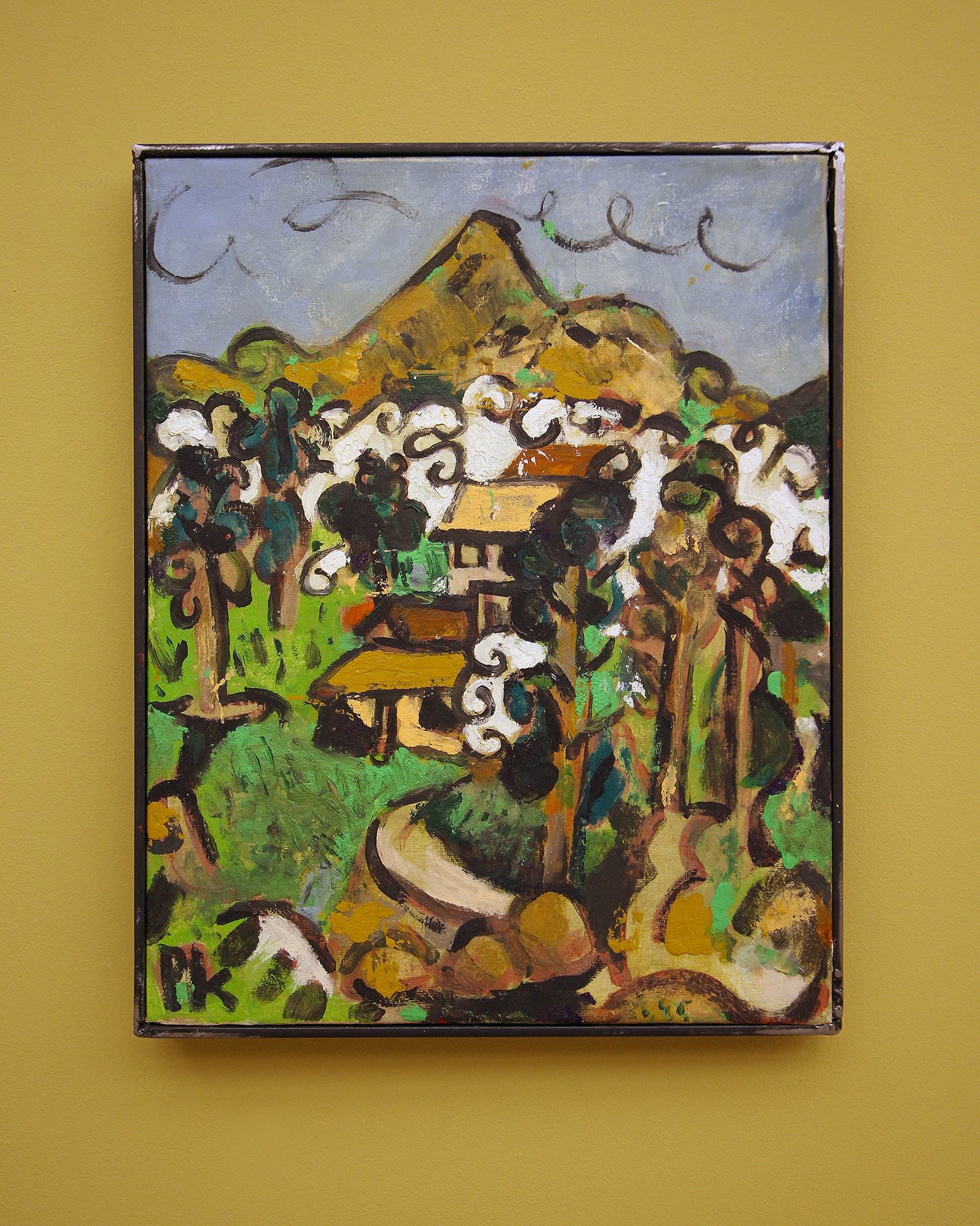 2.
2.
Note the squiggles of the trees. They no doubt establish the outline of the trees that are then fleshed out with other paint. But, in the same gesture, the squiggle is the tree's mode, its very leaves, its mode of touching the sky, of engaging its environs, of winding through the world. These squiggles are outline and tree, limit term and body, a border as well as an operation.
The entire scene is made of squiggles that blur, if not collapse, the line between border and body. The mountains are squiggles which, as they rise to the sky, meet squiggle clouds. The clouds bring this point home the clearest: they are nothing but squiggle as outline and body are indistinguishable. Or take what appears to be a ridge, in yellow and brown, curving around the trees toward the house: the very foundation of the world, this ground, is itself an elongated or extended squiggle. Let your eye follow these squiggles as they become a house, a furry of foliage, a mountain range, the sky, clouds. It becomes kaleidoscopic.
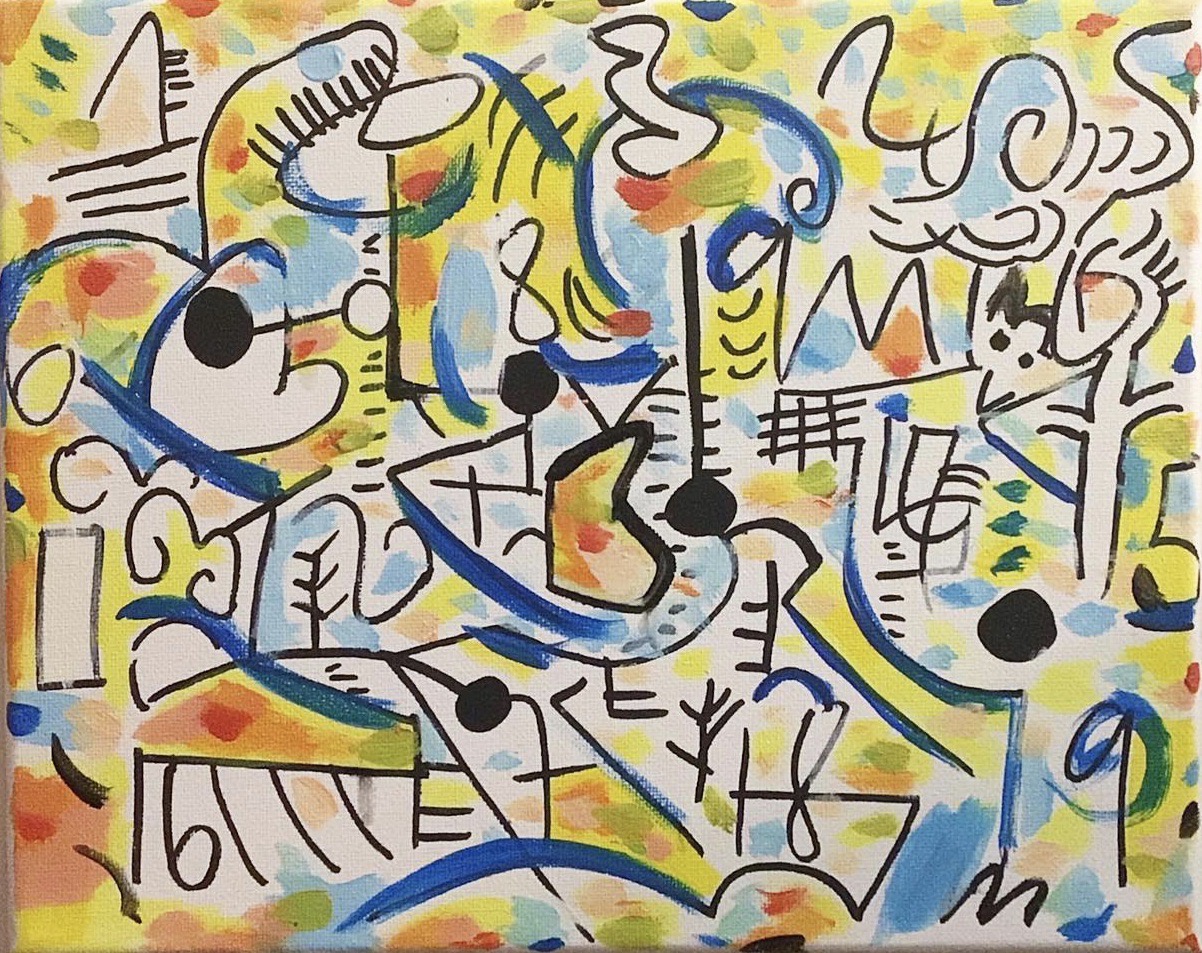 3.
3.
Of course, there's nothing novel about the squiggle per se. Klee, Miró, even Pollock all squiggle (there are of course many more squigglers throughout the history of art). But everyone squiggles in their own way. King's squiggle operates differently than the others. First of all, it is thicker, enjoying a weight-a heft, boldness, gravitas absent in the other artists' work. But what really differentiates King's squiggles is that they are not an element but are the very stuff of his worlds. Klee, for instance, engages the squiggle as a gesture among gestures, a bit of whimsy amid the scene. King's squiggle, on the other hand, defines the very terms of existence. Klee engages squiggles, too. But whereas his squiggle is whimsy amid the scene, King's squiggle is structural.
The case of Pollock is more complex. His line is less squiggle than what it really is-a drip. The difference between a squiggle and drip is enormous. The drip is constituted more by the forces of gravity and density than by a will to create worlds. In this sense, drips are less imperial than King's squiggle: drips bend with gravity while squiggles defy it. On the other hand, Pollock's drips are all encompassing, smothering the world like ants in your kitchen, while a squiggle maintains a level of ironic engagement (not ironic detachment!). Drips, in their radical neutrality, are adamant. Squiggles, in their squiggling will, invite play.
Pollock engages the drip, not the squiggle. Drips surrender to the forces of gravity and chance whereas the squiggle is the stuff of a playful will. Despite being the product of surrender to gravity, the neutrality of the drip becomes inhumanly adamant, like ants covering your meal. There's something serious and horrific about drips.
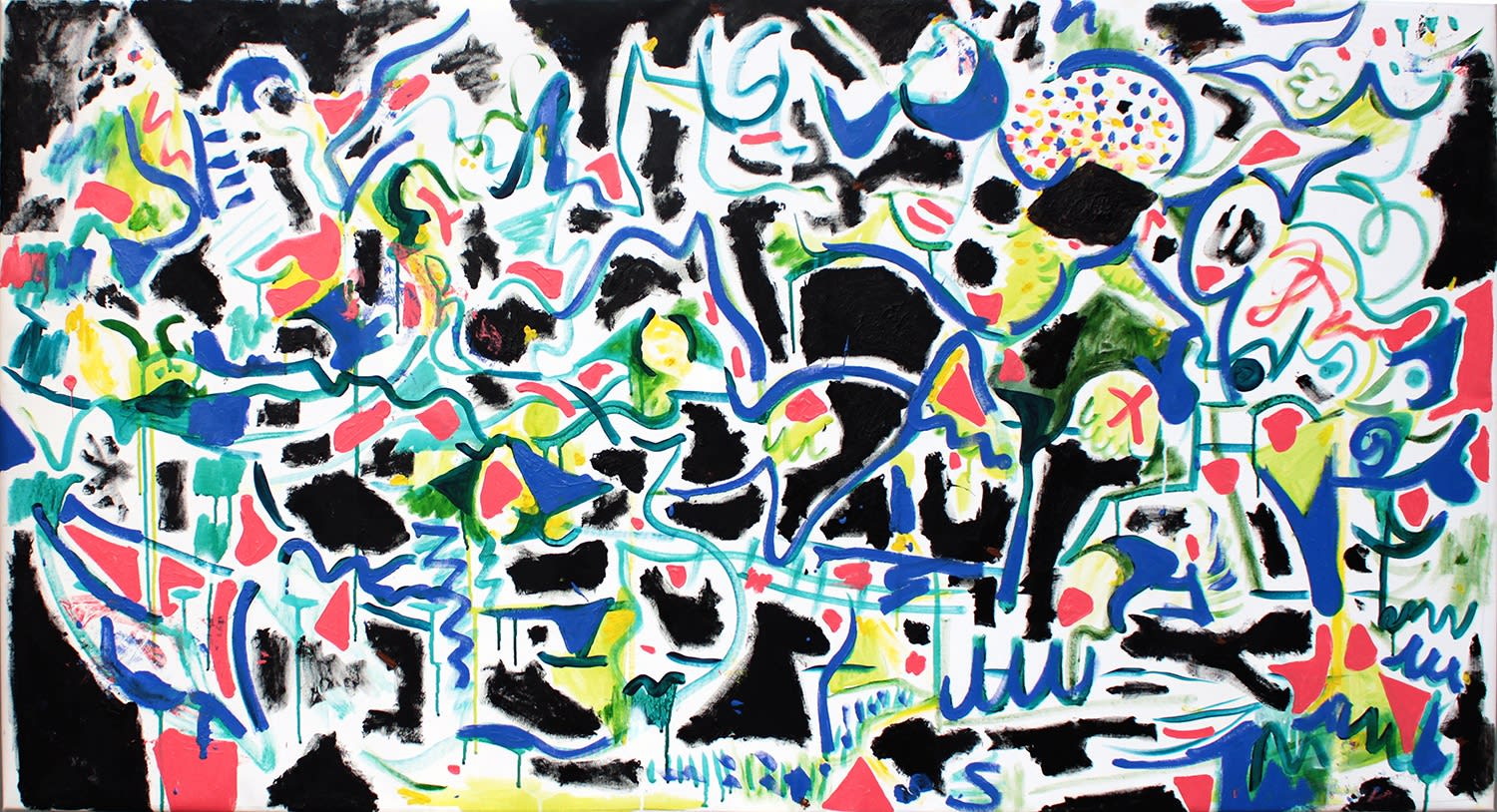 4.
4.
King's squiggles can sprawl like Pollock's drips and yet the two occupy space in fundamentally different ways. King's squiggle, while the work of a will, remains ambivalent, ironic, playful-even as it sprawls and occupies. Pollock's drips are dictatorial in their indifference; King's squiggle plays, ambivalent to the end.
Why a squiggle? What is a squiggle? Rather than a line, which King rarely uses, a squiggle is inherently infected. By definition, a squiggle turns. I want to say that King operates not with twisted geometric lines but with what Lucretius calls clinamen - the swerve in the movement of atoms through space. As a squiggle is fundamentally infected-or, rather, the squiggle is itself the very movement of infection-King proffers a world that has no background or foreground, no stage and actors, but is always already a site-and sight-of infection. That is, he does not give us a world on which squiggly trees bloom or atoms fall before swerving. No, everything here is squiggle - sky, clouds, houses, trees-as if King is only interested in the moment that Lucretius' atoms, falling, suddenly swerve. The very ground of King's work is squiggly and so effaces the very ground itself. ("Gladly we would anchor," writes Emerson, "but the anchorage is quicksand." The only difference here is that King doesn't want to anchor. And, as viewers and participants in his world, nor do we. Squiggles, unlike quicksand, don't smother. On the contrary, they invite, frolic, and flourish.) At the same time, King's squiggle functions as a term of relation to the history of art. There is indeed something conspicuously uncanny about King's work, as if you've seen it before as ghosts of Klee, Cézanne, Picasso, Braque, at times Guston, among many others, haunt King's canvas. And yet King's work is distinctly not the work of anyone else. King's squiggle is too thick and bold for Klee; too much of an outline for Cézanne; much messier than any Picasso. In this sense, King's squiggle operates as an infection of influence, forging a place within the canvas of painting with the deft gesture of the squiggle. He takes up the history of art and, in the same gesture, squiggles away his distance and differentiation (as Deleuze says of lightning, I say of King's squiggle: it is the very act of differentiating itself from the field).
In The Anxiety of Influence, Harold Bloom argues that every work of literature is the expression of an anxiety of influence - Joyce's Ulysses is the anxious negotiation of, among others, Homer and Shakespeare. There is no purely original work of art, Bloom argues. Every work is an attempt to navigate this inherent lack of originality. Such is King's work, rife as it is with gestures from 19th and 20th century painters. Only King clearly has no anxiety about it. He wears his influences on his canvas proudly, unabashedly - and infects them with the whimsy of his squiggles, his mode of turning influence into the novel.
 5.
5.
King's squiggle is, indeed, never anxious. On the contrary, it is exuberantly, devilishly joyful. His canvases glimmer with playful, if concerted, abandon. Speaking of Harold Bloom, King's paintings remind me a bit of the opening of The Book of J which has God impishly playing in the mud, creating man from the mire as a goof. King's works, too, are born of such play, unconcerned with presenting nature or life as it is. Standing before King's work, we see him playing in the slosh and mud that is the history of painting and creating new worlds on a goof as he sticks his fingers in and squiggles these new worlds into existence.
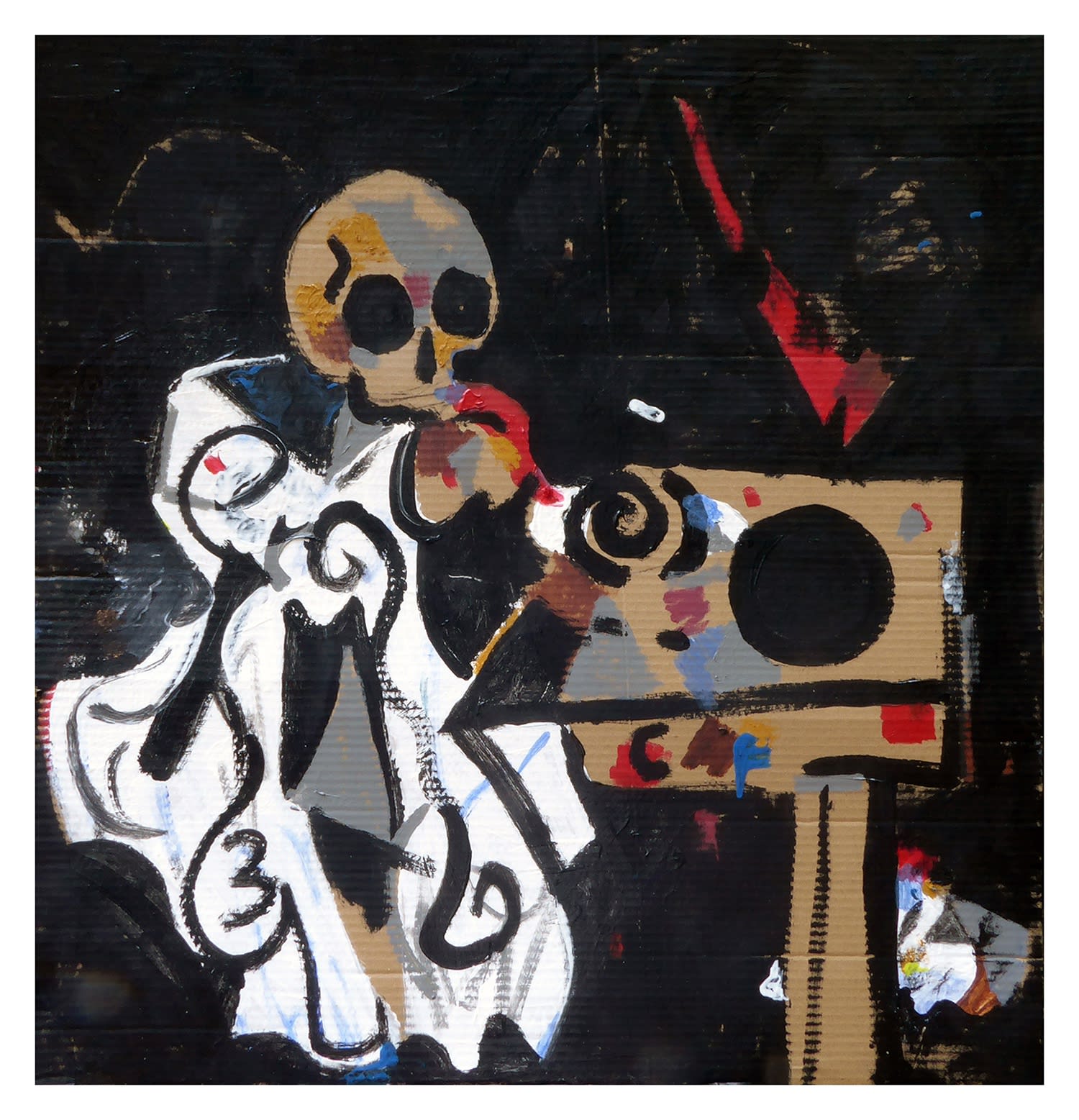 6.
6.
King does not have any of Cézanne's doubt (pace Merleau-Ponty). But nor does he have the hubris of claiming completion or totality. Rather, King operates with and as play, forging works that are always both done and not done. Like Cézanne's feeling about his own work, King's worlds never feel absolutely complete. But it's not because they're lacking anything. No, it's because they live in the act of coming into being (or, to be pedantic, coming into "becoming").
Throughout King's vast body of work, you can't help but notice the gleam of creation's immediacy as if, in our very viewing, these paintings come to be. They don't feel like masterpieces, as it were. We don't stand back in awe at the sublimity of their creation, afraid to approach. This is not Rembrandt. Nor is it the absurd closure of, say, Frank Stella whose canvases and sculptures are tightly closed nouns. No, viewing King's paintings, we participate in the very act of creation as we feel the electricity that such creative acts emit. King's paintings are verbs.
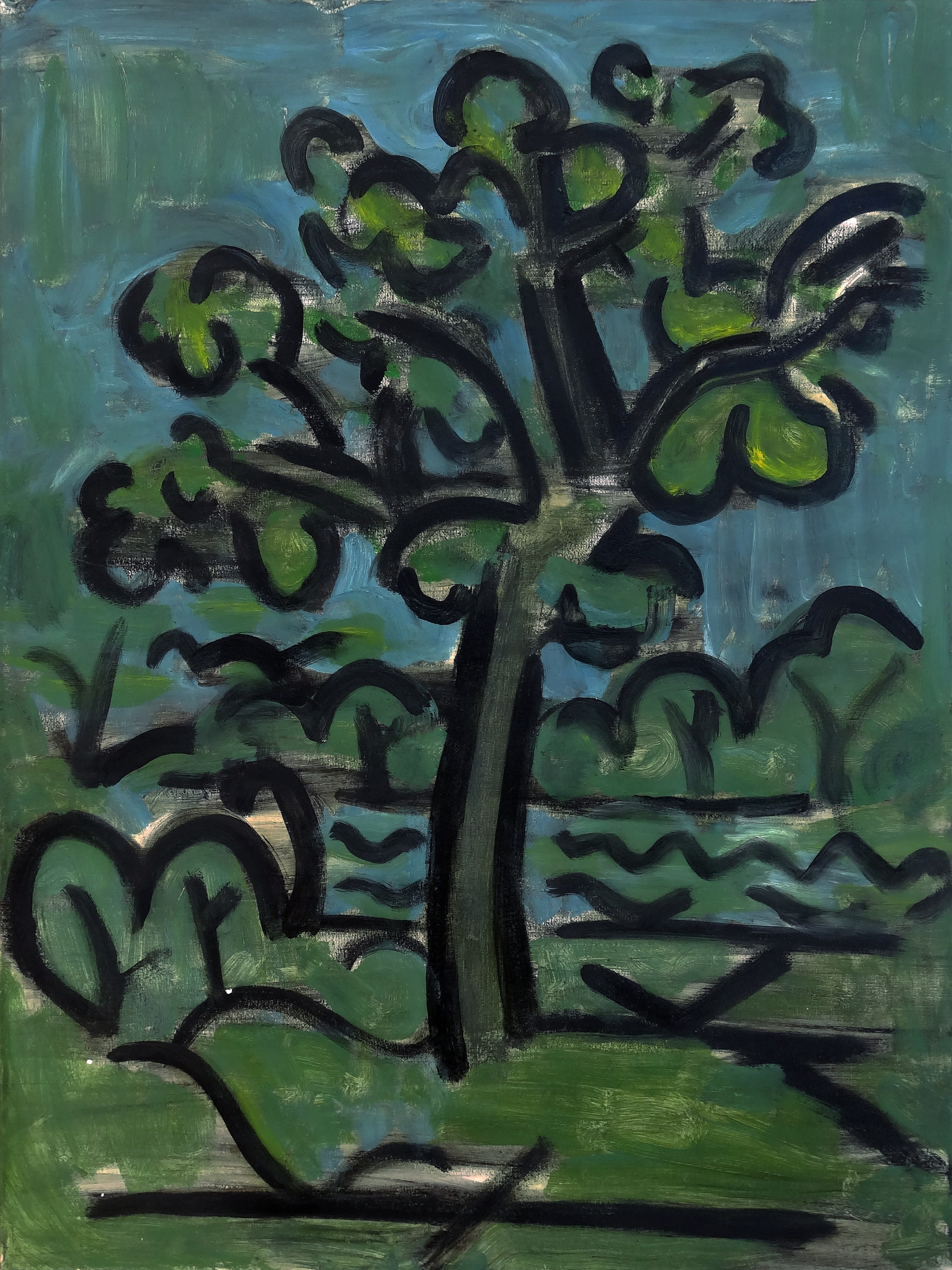 7.
7.
There is a creative frenzy running through King's paintings, his canvases vibrating with the very will and act of creation-like happening upon the universe moments after God let there be light. You can still feel the electricity of creation in the air and in your very bones. Whenever I see his paintings, I always think that if I just look quickly enough, I'll find King standing just out of frame, his hands covered in paint, an enormous grin across his face.
King's work is not always happy. But it is always playful, joyful, even as it occasionally treads into darkness, conflict, and dread.
Mind you, not all of King's work is happy. There is conflict, darkness, whiffs of dread as continental and affective plates shift and collide. But like Guston's work (I am ignoring the madness surrounding his work today just as that fabricated controversy ignores Guston's work) which, while treading in darkness, is never dark at heart, King's work maintains its play, its glee, its wry smile throughout. The squiggle has been around for as long as human beings have walked upright, if not before. But every squiggle squiggles in its on way-not just in its visible form but in its invisible operations as well. Like all great art, King's work creates new worlds that proffer strategies and tactics for living in whatever other worlds we find ourselves in.
King's squiggle is not mere adornment to a serious life, a trick to deploy when things get hard or dark. No, King gives us the world as squiggle, as the very terms of the universe's existence. And this offers us, his viewers, a line of fight from the geometric nonsense of our lives, inviting us not just to use the squiggle but to become squiggle.
Daniel Coffeen, April 2021
List of Paintings
1.Untitled Phil King 2013 installed at 1038SF gallery 30x40cm Acrylic on Canvas. (In the collection of Matthew Kotzin San Francisco.
2. 'Old Landscape' 2019, Oil on canvas, 35 x 28 cm (Not for sale)
3. 'Dog's Life' 2020, Acrylic and oil on canvas, 20 x 30 cm
4. 'Lemon Song' 2020, Oil on canvas, 95 x 175 cm
5. 'Les Jardins (The Gardens)' 2019-20, Oil on Canvas with collage 200 x 240cm
6. Still Life With Skull' 2018, Acrylic on cardboard, 73 x 76 cm
7. 'Twilight' 2020, Oil on canvas, 80 x 60 cm
